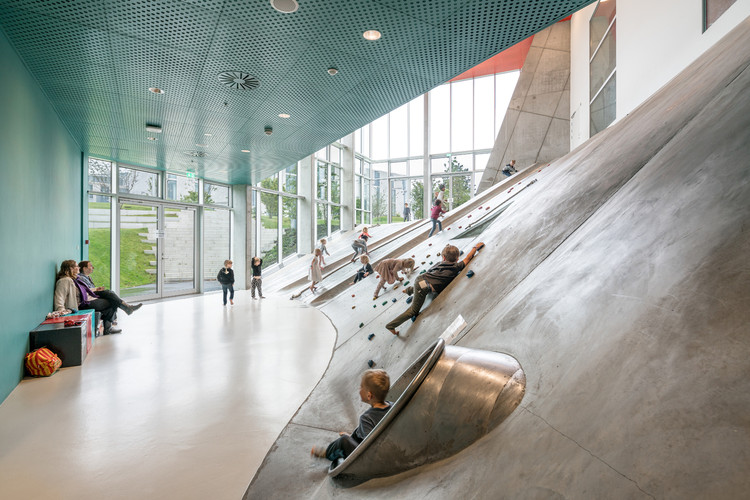What Is The Impact Of Architecture On Community Engagement And Social Interaction?

Architecture is not just about designing buildings, it's about creating spaces that enhance human interaction and foster relationships. The design of a building can play a significant role in how people interact and communicate with each other. In this article, we will explore the concepts behind the Architecture of Social Interaction.
What is the Architecture of Social Interaction?
The Architecture of Social Interaction is a design approach that emphasizes the importance of social relationships within a building. It focuses on creating spaces that encourage social interaction, collaboration, and community building.
The goal of this approach is to create spaces that promote positive social behaviors and foster connections between people, creating a sense of community and belonging. The Architecture of Social Interaction is about creating spaces that support and enhance human relationships and communication, rather than simply focusing on the physical appearance of the space.
The Benefits of the Architecture of Social Interaction
There are many benefits to designing buildings with the Architecture of Social Interaction in mind. Here are just a few:
Promotes Collaboration and Innovation
When people are encouraged to interact and collaborate, they are more likely to come up with innovative ideas and solutions. The Architecture of Social Interaction promotes collaboration and creates spaces where people can work together and share ideas.
Increases Social Interaction and Community Building
The Architecture of Social Interaction creates spaces that foster social interaction and community building. It encourages people to interact with each other and build lasting relationships, leading to a sense of belonging and community.
Improves Health and Well-Being
The Architecture of Social Interaction has been shown to have a positive impact on health and well-being. By creating spaces that encourage social interaction, people are more likely to engage in physical activity and participate in community events, leading to better health outcomes.
Enhances User Experience
When buildings are designed with the Architecture of Social Interaction in mind, the user experience is enhanced. People feel more connected to the space and to each other, leading to a more enjoyable and fulfilling experience.
The Elements of the Architecture of Social Interaction
There are several key elements that are essential to the Architecture of Social Interaction:
Open Floor Plans
Open floor plans are a key feature of the Architecture of Social Interaction. They create spaces that are conducive to collaboration and social interaction, allowing people to see and interact with each other easily.
Flexible Spaces
Flexible spaces are another important element of the Architecture of Social Interaction. They allow a building to adapt to the needs of its users, creating spaces that can be used for a variety of purposes, from work to play.
Common Areas
Common areas are spaces that are shared by multiple users. They create opportunities for social interaction and community building, as people come together in these spaces to relax, work, or play.
Natural Light and Greenery
Natural light and greenery are important elements of the Architecture of Social Interaction. They create a sense of openness and connection to the natural environment, which has been shown to have a positive impact on health and well-being.
Intentional Design
Intentional design is also key to the Architecture of Social Interaction. Every element of the building should be designed with the goal of promoting social interaction and community building, from the layout to the materials used.
FAQs
What types of buildings are best suited for the Architecture of Social Interaction?
The Architecture of Social Interaction can be applied to any type of building, from offices to schools to residential buildings. The key is to design the space with the goal of promoting social interaction and community building in mind.
How can the Architecture of Social Interaction be incorporated into an existing building?
The Architecture of Social Interaction can be incorporated into an existing building through renovations and redesigns. By creating open floor plans, flexible spaces, and common areas, an existing building can be transformed into a space that promotes social interaction and community building.
What are some examples of buildings that incorporate the Architecture of Social Interaction?
Some examples of buildings that incorporate the Architecture of Social Interaction include the Google campus in Mountain View, California and the KuBe House of Culture and Movement in Denmark.
What are some challenges in designing buildings with the Architecture of Social Interaction in mind?
One of the biggest challenges in designing buildings with the Architecture of Social Interaction in mind is balancing the need for privacy with the need for social interaction. It's important to create private spaces within the building, while also providing opportunities for social interaction and collaboration.
What are the future trends in the Architecture of Social Interaction?
The future trends in the Architecture of Social Interaction are focused on creating spaces that are even more flexible and adaptable to the needs of their users. This includes the use of modular designs and the incorporation of technology that allows users to customize their space.
Conclusion
The Architecture of Social Interaction is a design approach that emphasizes the importance of social relationships within a building. By creating spaces that encourage social interaction, collaboration, and community building, this approach has many benefits, from promoting innovation to improving health and well-being. With the right design elements and intentional design, any building can be transformed into a space that supports and enhances human relationships and communication.


Post a Comment for "What Is The Impact Of Architecture On Community Engagement And Social Interaction?"